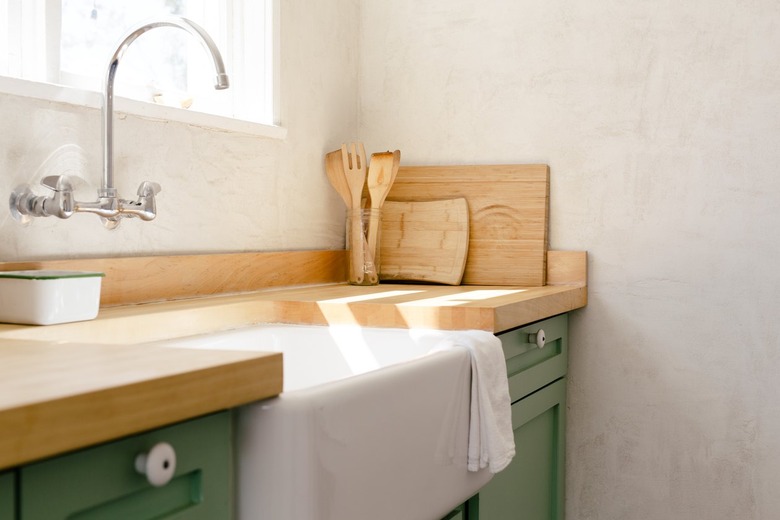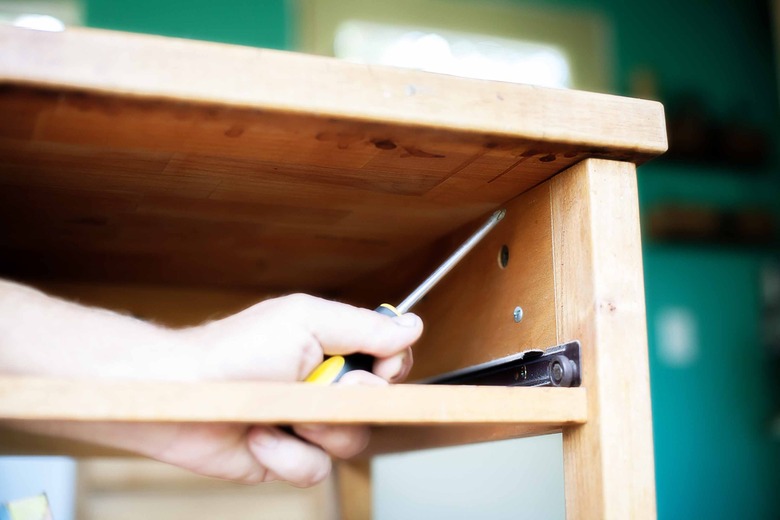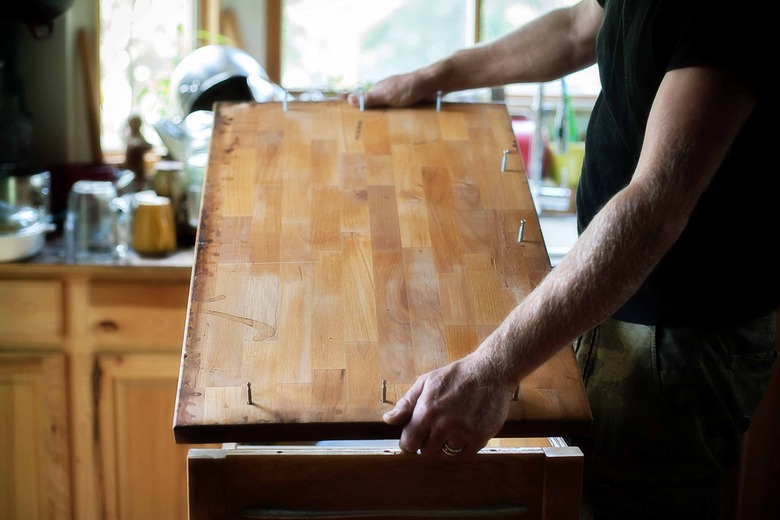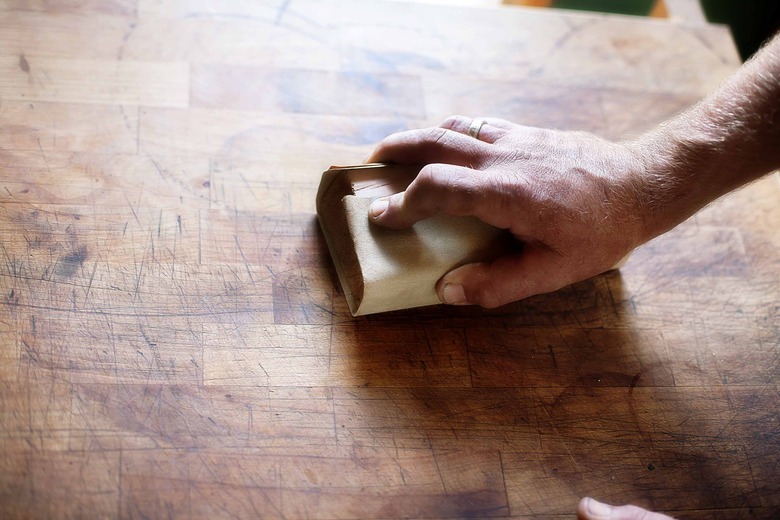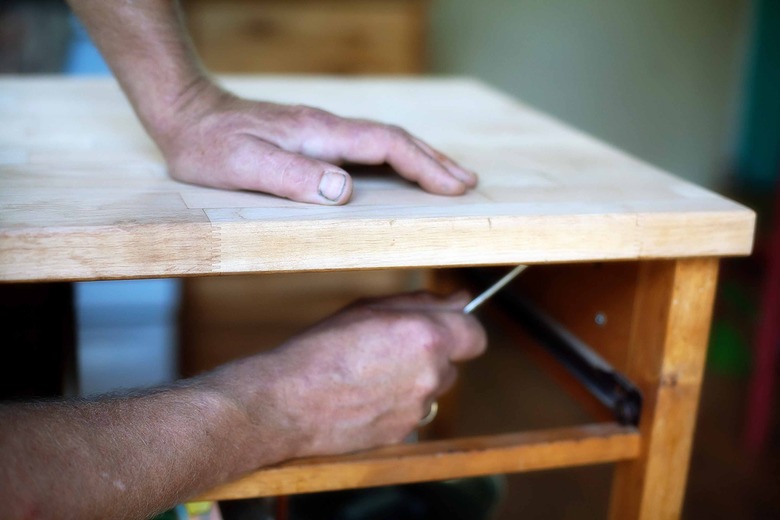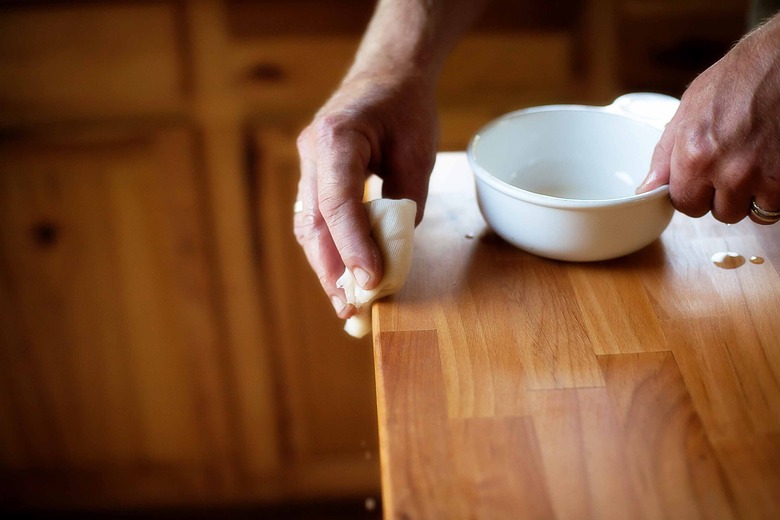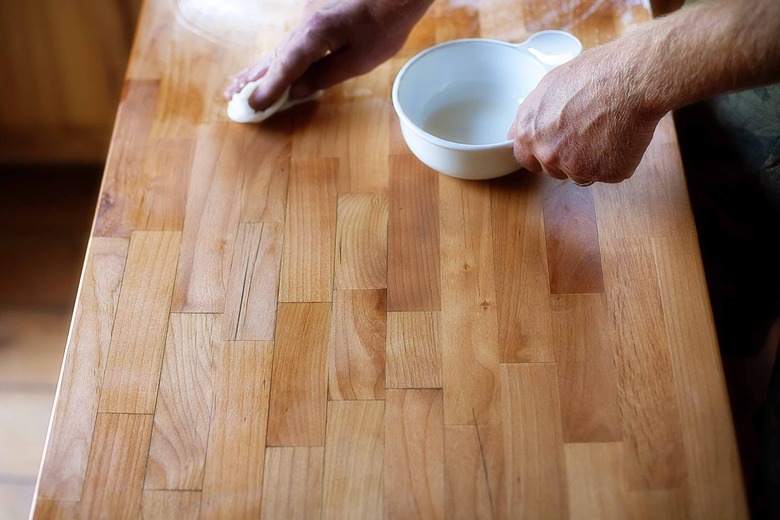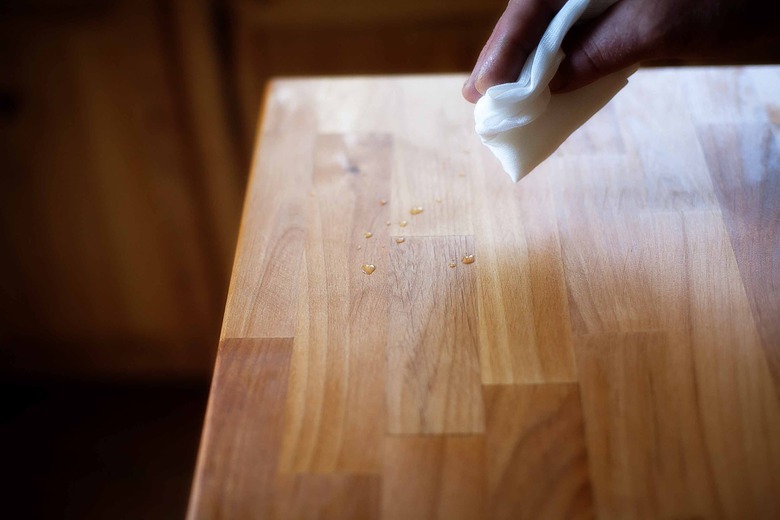How To Refinish Butcher Block Countertops
We may receive a commission on purchases made from links.
Butcher block countertops can make any kitchen look charming and rustic — or at least they do when they aren't covered in cooking stains or scratches. If you have an older butcher block countertop that has seen better days, it may be time to refinish it (and it's actually easier than it sounds).
Refinishing a butcher block will make it look brand new again. What's more is that the seasoning process will prevent new stains and the absorption of bacteria.
Things Needed
-
Screwdriver
-
Wood putty (optional)
-
Sandpaper, various grades
-
Cloth
-
Screws
How to Restore Butcher Block Countertops
1. Remove the countertop block
If your butcher block is screwed on top of floor cabinets, open cabinet doors below and remove any drawers to get a look at how it is attached. You may see about four to six screws holding it in place. Unscrew these from underneath with a screwdriver.
2. Decide whether or not to flip the wood
Decide whether you want to keep the current side of the butcher block on top or flip it over. Some neglected butcher blocks may have warped and will look better if flipped over, with the old wood screw holes filled in with wood putty. Others may be fine keeping the existing top surface as-is.
3. Sand the wood
Sand the top, beginning with 80-grit sandpaper and proceeding to finer grades. Use smooth, even-pressure sanding to avoid butcher-block "valleys" or a wavy surface. Sand the four edges as well. Brush off the particles.
4. Apply the oil
Apply a light coat of mineral oil or butcher block oil to what will become the underside of the butcher block. Food-grade mineral oil is available in most drugstores, in the laxative section, as mineral oil USP grade. Allow the oil to soak in for about 15 to 30 minutes. This will protect the underside of the butcher block from moisture absorption in a humid kitchen.
Tip
Do not use vegetable or olive oils because they can turn rancid. Mineral oil remains safe throughout its life and poses no health risks if your chopping knife touches the refinished butcher block. Never use urethane to finish a butcher block.
5. Reattach the butcher block
Replace the butcher block on top of your cabinets, using new screws of the appropriate length to fasten them to the supports.
6. Add oil to the sides of the block
Coat the top and sides of the butcher block with oil, including the three sides not abutting the wall. Pay special attention to the edge nearest water sources, such as your sink. Apply about 1 oz. (2 tbsp.) per each square foot with a clean rag, rubbing the oil around evenly.
7. Continue adding oil
Repeat the oil coating nightly for a total of three applications, letting the butcher block absorb the oil overnight. Keep bowls, appliances and other objects off the butcher block during this period.
8. Repeat the oil application as needed
Complete up to six applications of mineral oil in the first week. However, you may find the oil beginning to pool and puddle after three applications. Judge for yourself how much oil your butcher block can absorb. Repeat the oil application after two weeks, and every three to four weeks thereafter. Gauge the need for additional oil by how thoroughly a test drop of water beads on top of the butcher block without soaking in.
Warning
Try to wipe up water and food spills off your butcher block right away, even after it is refinished. Moisture swells and may discolor the wood.
